Measuring the ROI of AI in Customer Engagement
.avif)
The stakes have never been higher. Your customers expect personalized experiences every time they interact with your brand. And the companies delivering those experiences? They're using artificial intelligence to do it.
But here's the thing that keeps executives up at night: How do you know if your AI investment is actually paying off? Sure, your customer engagement metrics might look better, but is that translating to real business value?
The truth is, measuring the ROI of AI in customer engagement isn't just about tracking clicks and conversions anymore. It's about understanding how intelligent systems transform every touchpoint in your customer journey into a revenue-generating opportunity.
Here’s what you need to know…
Why Traditional Metrics Fall Short in the AI Era
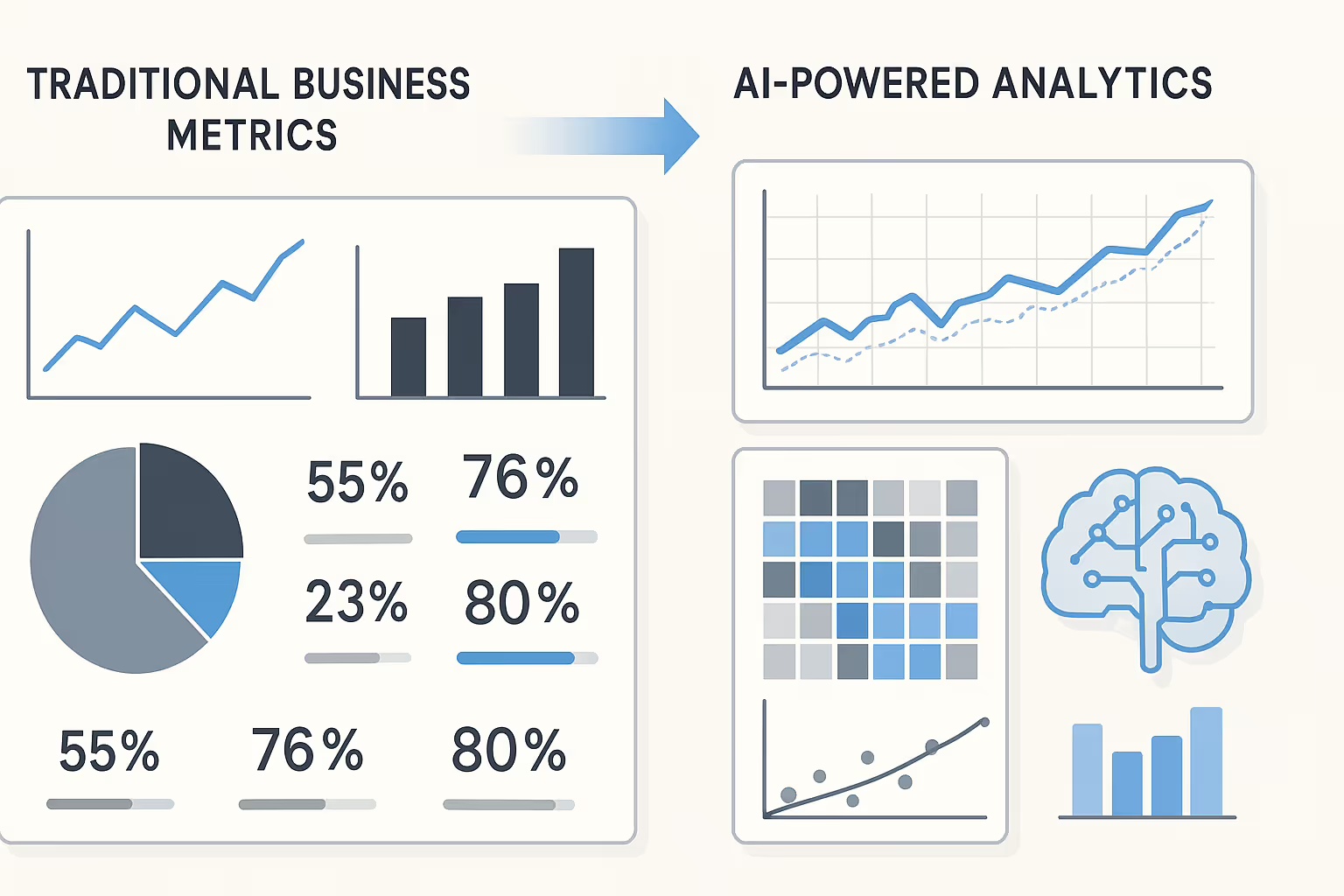
Remember when measuring customer engagement meant counting email opens and website visits? Those days are over.
AI-powered customer engagement operates on an entirely different level. While traditional metrics give you snapshots, AI provides a continuous movie of customer behavior. Companies using AI-generated content report a massive increase in engagement metrics such as click-through rates and social media interactions.
The problem? Most businesses are still using last century's measuring stick for this century's technology.
Traditional marketing methods rely on manual data collection and interpretation, which can be time-consuming and prone to human error. AI-driven platforms, however, can assess the performance of campaigns instantly, allowing marketers to optimize their strategies on the fly.
This creates a fundamental measurement challenge. Your AI system might be making hundreds of micro-optimizations daily, each one improving customer experience incrementally. But if you're only measuring monthly conversion rates, you're missing the forest for the trees.
The Real Metrics That Matter
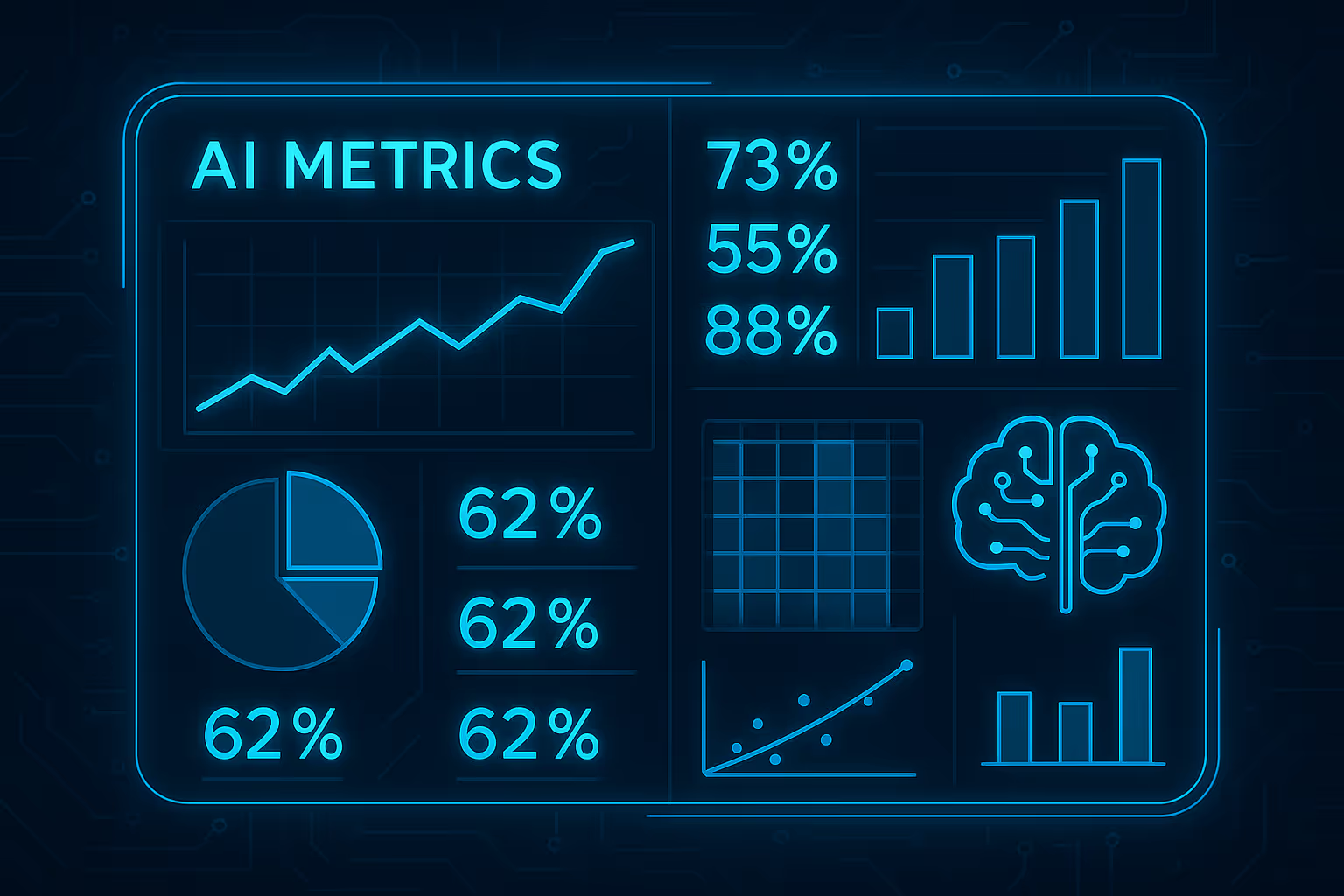
Customer Lifetime Value Gets Smarter
Forget about basic CLV calculations. AI transforms customer lifetime value from a backward-looking metric into a forward-thinking strategic tool.
Accurate CLV prediction enables companies to segment their clientele and offer individualized experiences. These insights can result in more focused marketing campaigns that raise customer satisfaction levels while also increasing rates of loyalty and retention.
Here's what makes AI-powered CLV different:
- Predictive accuracy: Machine learning models analyze thousands of data points to predict future behavior
- Real-time updates: CLV adjustments happen as customer behavior changes
- Segment-specific insights: Different customer types get different value predictions
Companies using AI in CLV prediction see customer retention rates increase by 5%, which can boost profits by 25% to 95%.
Engagement Depth vs. Engagement Breadth
Surface-level engagement metrics tell you if customers are interacting. AI metrics tell you if they're connecting.
AI systems can analyze vast amounts of data from various sources – social media, website behavior, purchasing history, and more – to create detailed customer profiles. This allows businesses to offer highly personalized product recommendations, targeted advertisements, and customized content.
The key metrics to track:
- Session quality scores: How meaningful were the interactions?
- Behavioral progression: Are customers moving closer to purchase decisions?
- Emotional sentiment: What's the mood behind the engagement?
Predictive Churn Prevention
Traditional churn metrics tell you who left. AI metrics tell you who's about to leave—and why.
AI algorithms can identify patterns in customer data to determine which leads are most likely to convert, enabling sales teams to focus their efforts on high-potential prospects. This predictive lead scoring has been shown to increase sales productivity by 12%.
But the real power comes from prevention. By identifying at-risk customers, businesses can implement retention strategies before it's too late. This proactive approach can improve customer loyalty and lifetime value.
How AI Transforms Customer Engagement ROI
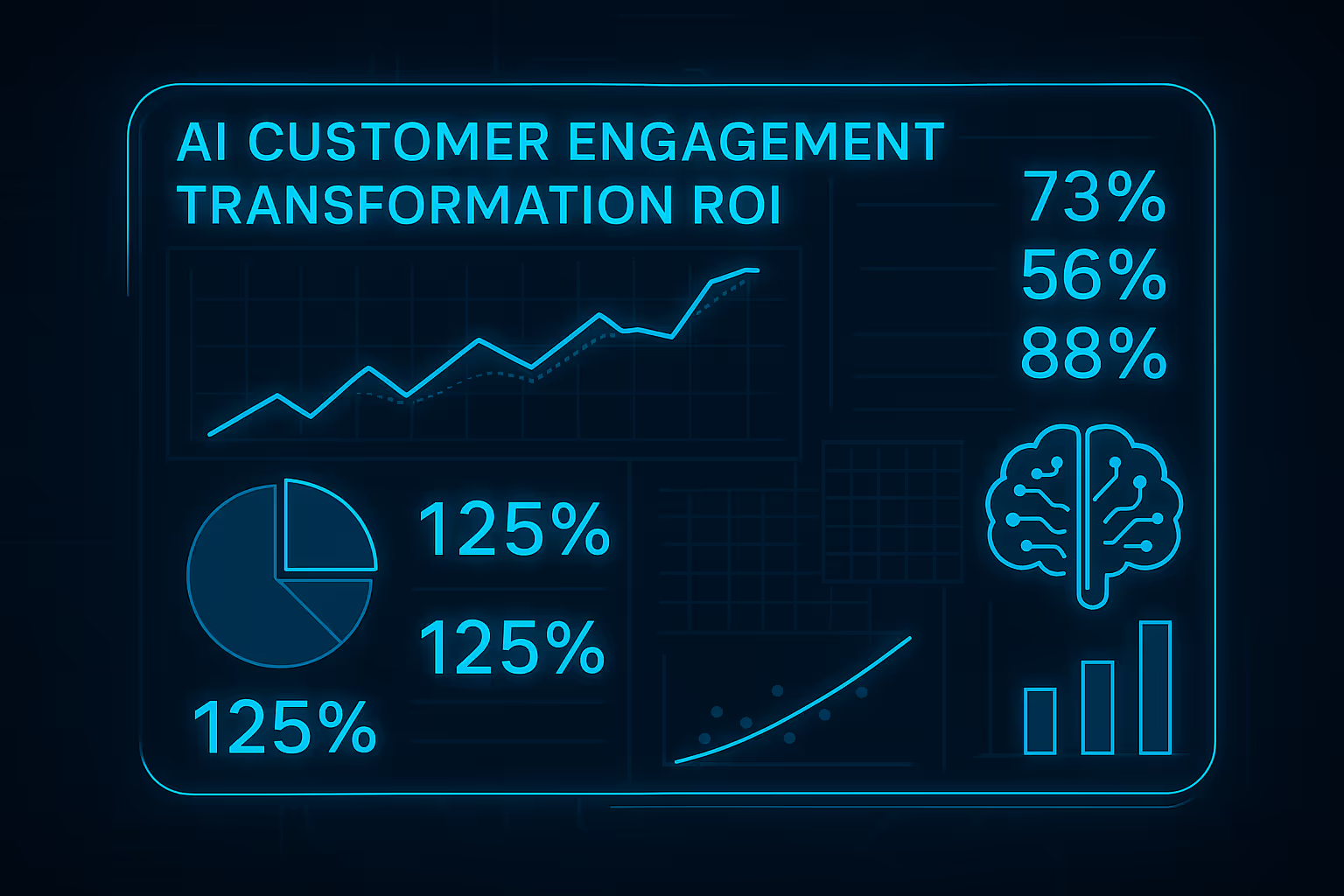
Automation Amplifies Everything
The beauty of AI in customer engagement isn't just what it does, but how much it does.
AI tools like chatbots, automated email marketing, and lead-scoring systems help companies streamline repetitive tasks, freeing up human resources to focus on more strategic efforts. According to Salesforce's State of Marketing report, 84% of marketers in 2023 reported using AI to automate routine tasks.
This automation creates a multiplier effect on ROI:
- One AI system can handle thousands of customer interactions simultaneously
- Personalization happens at scale without proportional cost increases
- 24/7 availability means no missed engagement opportunities
The cost savings are substantial. Deloitte projects that AI-powered sales systems can reduce operational costs by 20% through better lead management, automated follow-ups, and more efficient sales processes.
{{cta-banner}}
Personalization That Actually Personalizes
Here's where AI really shines. Instead of "Dear [First Name]" personalization, AI creates truly individualized experiences.
AI can predict what blog topics are trending within a specific industry, helping businesses stay ahead of their competitors by focusing on the most relevant issues. It also helps refine existing content for SEO, ensuring it ranks higher on search engines and attracts more organic traffic.
The results speak for themselves:
- Companies using AI for personalization see 91% higher likelihood of customers shopping with brands that offer relevant offers and recommendations.
- Predictive analytics powered by AI can improve sales forecasting accuracy by up to 50%.
Real-Time Optimization Changes Everything
Traditional marketing campaigns were set-and-forget. AI campaigns are constantly evolving.
AI algorithms can optimize campaigns in real time by adjusting factors such as ad placement, timing, and messaging based on live performance data. This enables companies to maximize their marketing budgets by focusing on strategies that yield the best results.
Forrester Research predicts that by 2025, businesses using AI-driven marketing platforms will achieve a 25% improvement in marketing ROI compared to those relying on traditional methods.
Measuring What Actually Moves the Needle
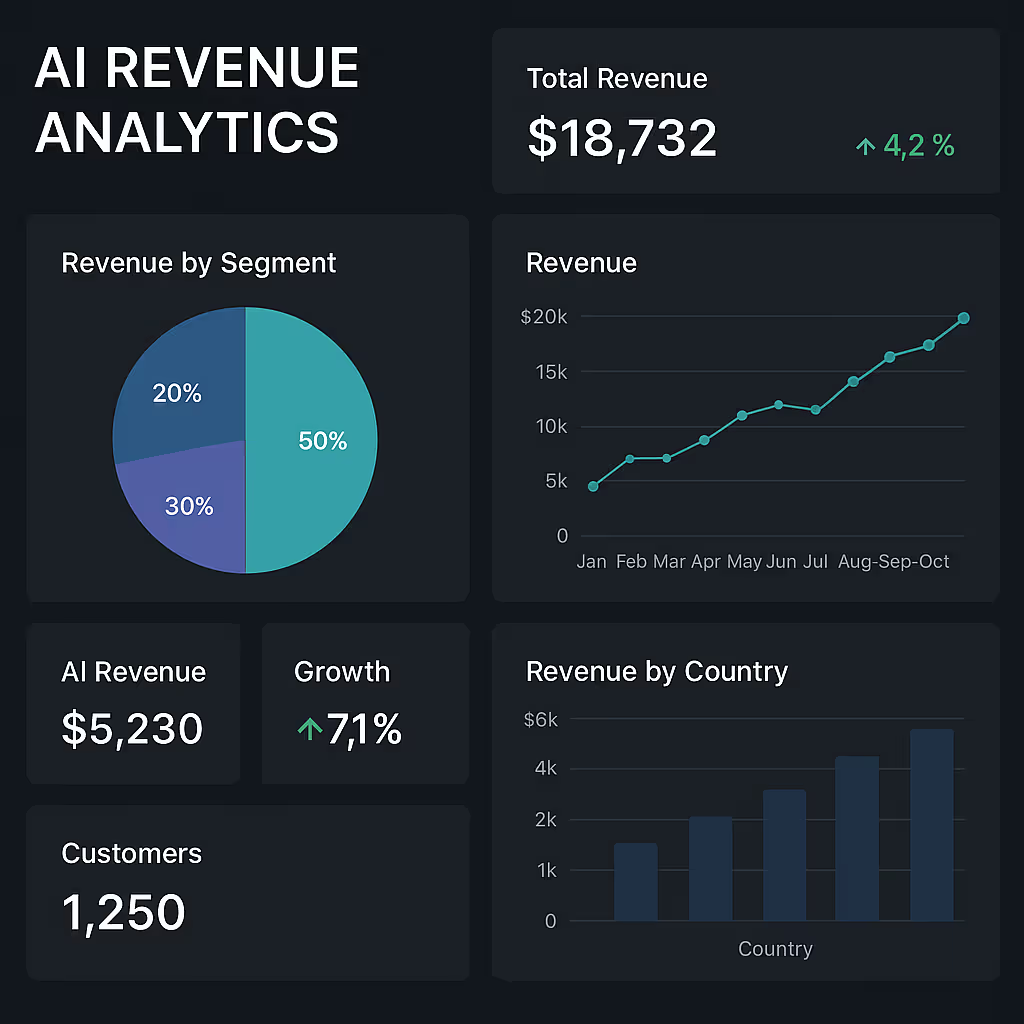
Revenue Attribution in the AI Age
The challenge with AI is that its impact is everywhere and nowhere at once. How do you attribute revenue to a system that touches every customer interaction?
The answer lies in incrementality testing. Instead of trying to isolate AI's impact, measure the overall lift in business performance:
- Compare periods before and after AI implementation
- Run control groups where possible
- Track leading indicators that predict revenue growth
Customer Satisfaction as a Leading Indicator
Happy customers spend more money. It's that simple.
AI-driven insights can improve customer experience and satisfaction scores. Companies using AI chatbots report significant improvements after implementation, including increased satisfaction and engagement.
The metrics to watch:
- First-contact resolution rates: Are customers getting answers faster?
- Support ticket volume: Are fewer problems occurring?
- Net Promoter Score: Are customers more likely to recommend you?
Operational Efficiency Gains
Sure, AI improves customer-facing metrics, but it also transforms internal operations.
The ability for each agent to manage dozens of messaging conversations at a time, as compared to one at a time for a voice agent and two to four at a time for a chat agent. Adding AI and bots provides even greater scale.
This translates to:
- Labor efficiency gains of at least two times that of voice agents
- More satisfied contact center agents, reducing agent churn
- Higher conversion rates and increased average order value
The Implementation Reality Check

Setting Realistic Expectations
AI is an extremely powerful tool that needs proper implementation and measurement in order to deliver what you expect it to.
Companies deploying Enterprise AI applications into production use in as little as four weeks are seeing significant returns. But these returns compound over time, not overnight.
Key success factors include:
- Clear goal setting before implementation
- Choosing the right technology stack
- Proper training and change management
- Continuous optimization based on data
Avoiding Common Measurement Pitfalls
The biggest mistake companies make? Expecting AI to be a silver bullet.
AI's value often compounds over time in ways that simple campaign metrics can't capture. Improvements in customer lifetime value from better retention strategies might take quarters to fully materialize.
Common pitfalls to avoid:
- Focusing only on short-term metrics
- Ignoring the learning curve of AI systems
- Not accounting for the distributed impact across the customer journey
- Expecting immediate results from long-term investments
Advanced Strategies for Sophisticated Measurement
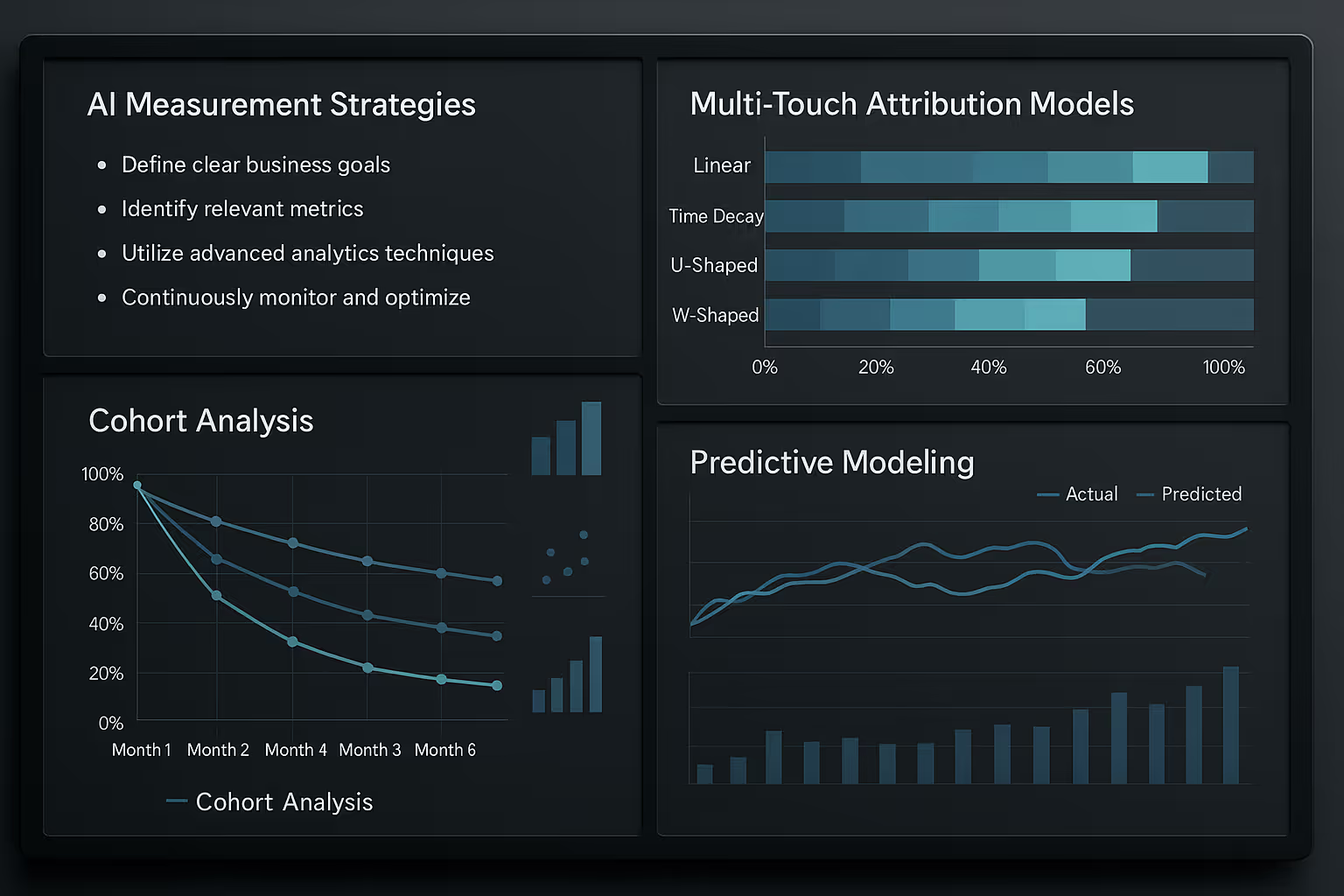
Multi-Touch Attribution Models
AI's influence spreads across the entire customer journey. Traditional last-touch attribution models completely miss this distributed impact.
Instead, use data-driven attribution powered by AI that accurately assigns credit to each interaction in real time. This helps you optimize campaigns in real time and get the best return for your marketing dollars.
Cohort Analysis for Long-Term Value
Track groups of customers over time to see how AI improvements affect long-term behavior.
This approach reveals:
- How engagement quality changes customer behavior
- Whether AI-driven experiences create lasting loyalty
- Which AI features provide the most long-term value
Predictive ROI Modeling
Use AI to predict its own ROI. Meta? Maybe. Effective? Absolutely.
By analyzing historical data and current trends, AI can forecast:
- Expected customer lifetime value changes
- Predicted churn reduction rates
- Anticipated revenue lift from specific initiatives
The Future of AI ROI Measurement
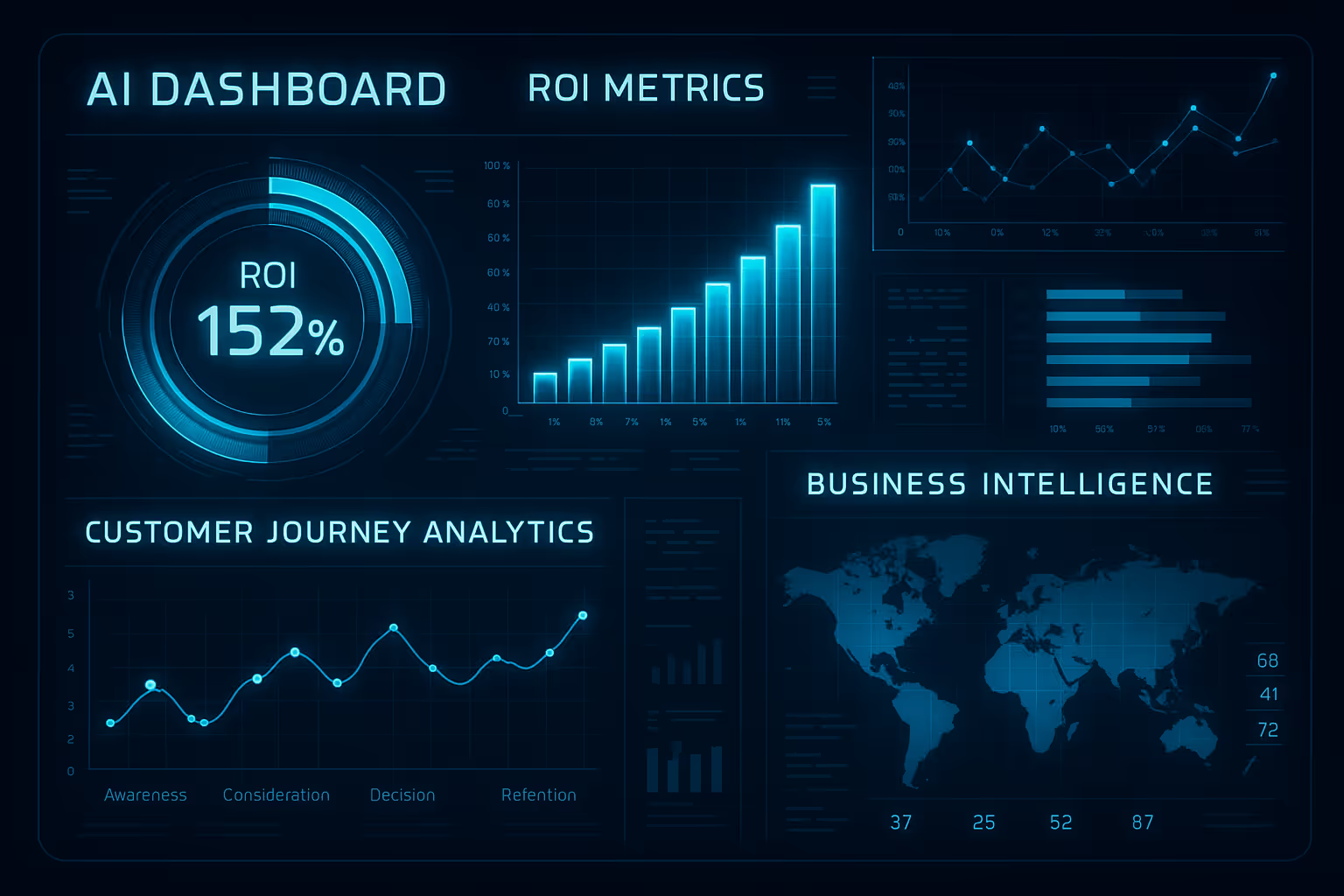
Beyond Traditional Metrics
The next generation of AI measurement goes beyond traditional business metrics to include:
- Customer emotional journey mapping
- Predictive satisfaction modeling
- Real-time experience optimization
Integration with Business Intelligence
AI ROI measurement is becoming part of broader business intelligence strategies. Companies are integrating customer engagement data with:
- Financial performance metrics
- Operational efficiency measures
- Market share and competitive analysis
Industry-Specific Considerations

iGaming and Online Casino Platforms
The iGaming industry presents unique challenges and opportunities for AI ROI measurement.
Customer engagement in this sector requires careful balance between excitement and responsibility. AI helps operators:
- Identify high-value players more accurately
- Personalize game recommendations
- Implement responsible gaming measures
- Optimize bonus and reward strategies
Leading platforms report significant improvements in player lifetime value and engagement depth when AI is properly implemented and measured.
E-commerce and Retail
Retail AI ROI measurement focuses heavily on:
- Conversion rate optimization
- Cart abandonment reduction
- Personalized product recommendations
- Inventory management improvements
B2B and Professional Services
B2B companies measure AI ROI differently, focusing on:
- Lead quality improvements
- Sales cycle reduction
- Account expansion opportunities
- Customer success metrics
Building Your AI ROI Measurement Framework
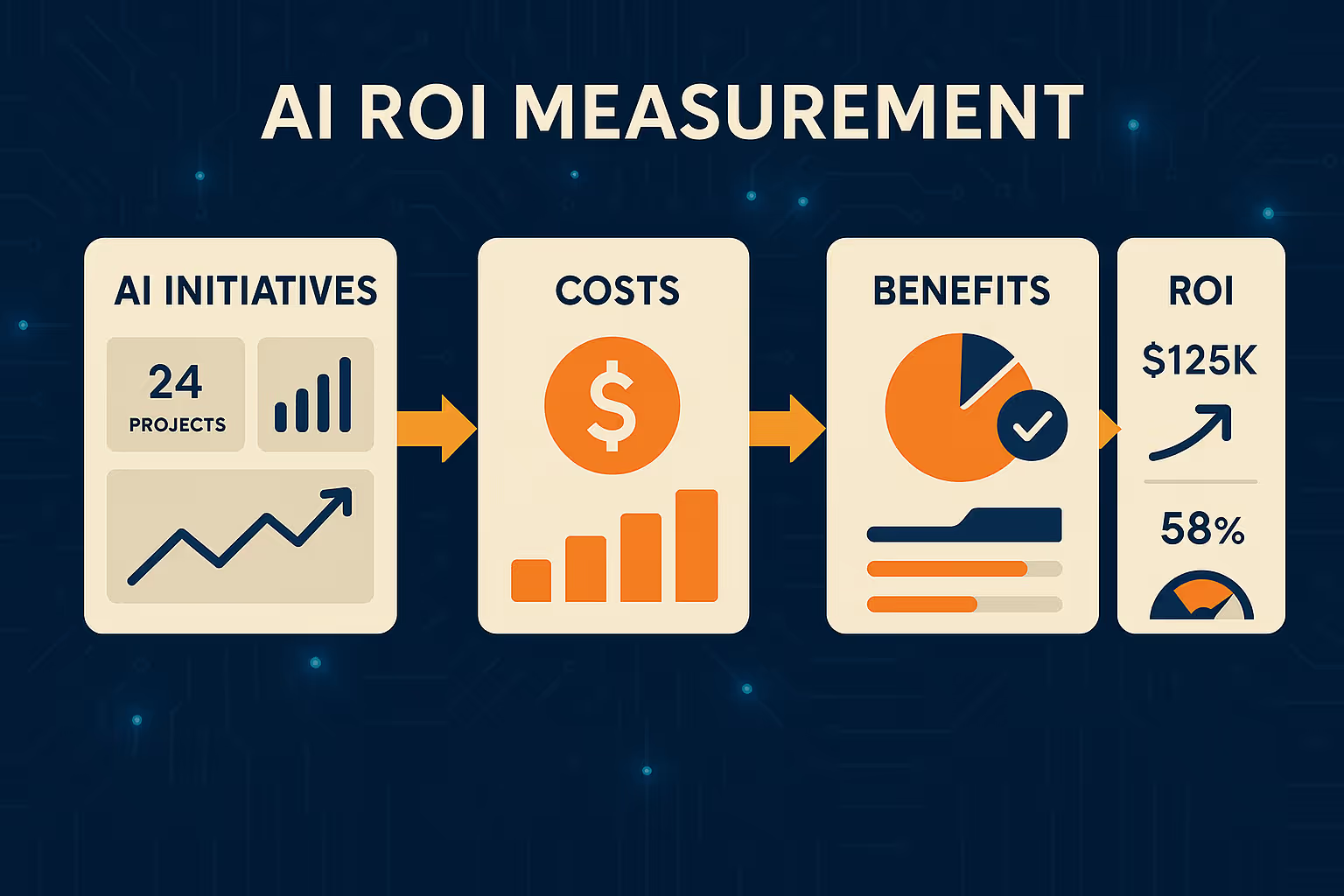
Step 1: Define Your North Star Metrics
Choose 3-5 key metrics that directly tie to business value:
- Revenue growth
- Customer lifetime value
- Customer acquisition cost
- Retention rates
- Operational efficiency
Step 2: Establish Baseline Measurements
Before implementing AI, document:
- Current performance levels
- Customer behavior patterns
- Operational costs
- Satisfaction scores
Step 3: Implement Tracking Systems
Ensure you can measure:
- AI system performance
- Customer behavior changes
- Business outcome improvements
- Cost savings and efficiency gains
Step 4: Create Regular Reporting Cadences
Establish:
- Daily operational dashboards
- Weekly performance reviews
- Monthly strategic analysis
- Quarterly ROI assessments
Smartico.ai: The First and Leading Unified Gamification and CRM Platform
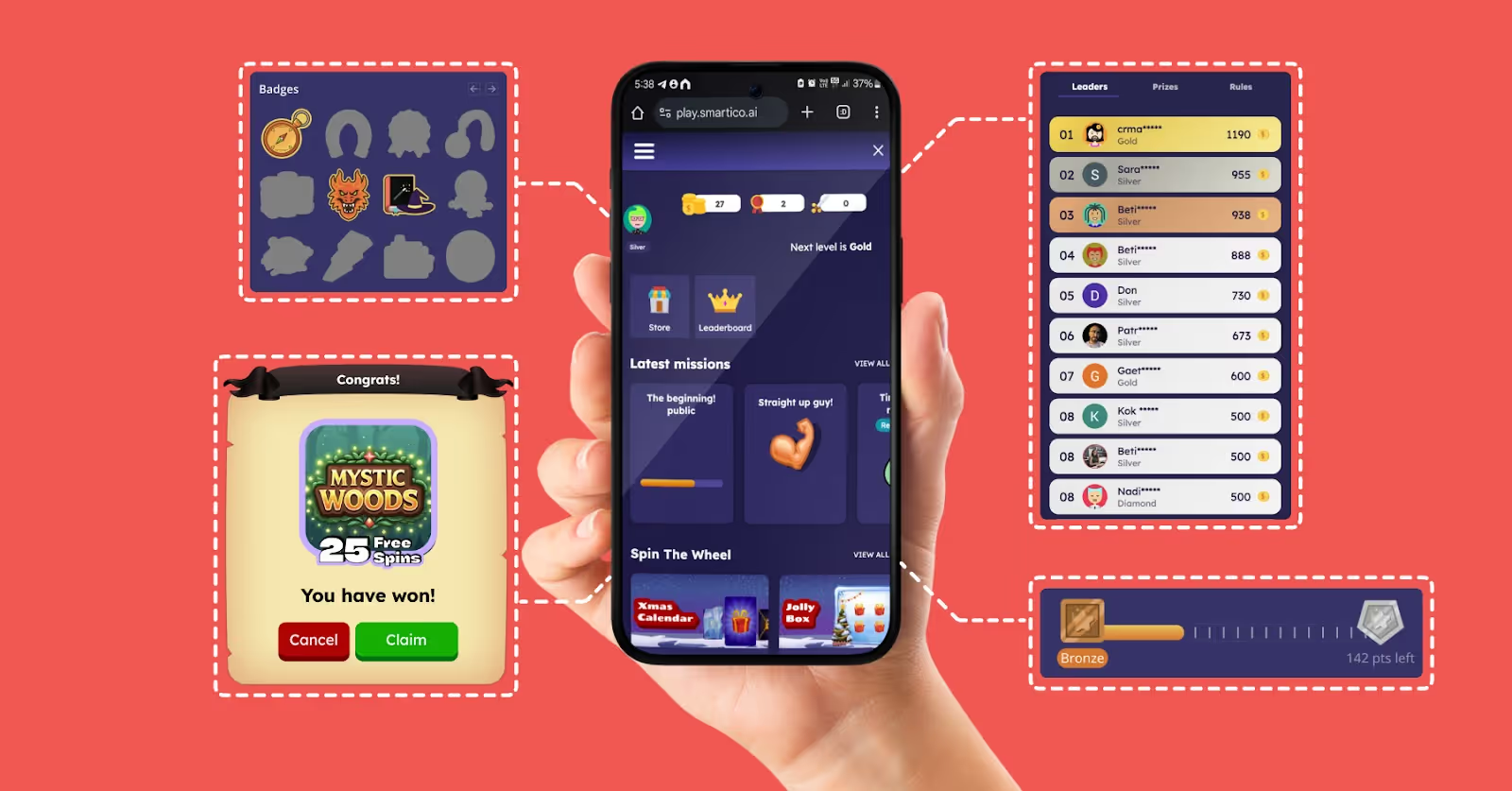
When it comes to measuring and maximizing the ROI of AI in customer engagement, having the right platform makes all the difference. Smartico.ai stands as the first and leading unified Gamification & CRM Automation software in history, completely changing how businesses engage with their customers.
What sets Smartico.ai apart is its deep approach to customer engagement. The platform smoothly integrates gamification elements with advanced CRM automation, creating a unified system that drives both engagement and measurable business results.
Key features include:
- Real-time behavioral segmentation that automatically categorizes customers based on their actions and preferences
- AI-powered predictive modeling that identifies high-value customers and at-risk accounts before problems arise
- Advanced bonus engines that deliver personalized rewards and incentives at precisely the right moments
- Comprehensive analytics dashboard that tracks every aspect of customer engagement and its impact on business metrics
Smartico's unified approach means businesses no longer need to juggle multiple systems to understand and optimize customer relationships. Everything from initial engagement through long-term retention is managed within a single, intelligent platform.
For companies serious about measuring and improving their AI ROI in customer engagement, Smartico.ai provides the tools, insights, and automation needed to turn customer interactions into sustainable business growth.
Book your free, in-depth demo below to find out how we can help you get your business from A to Z in no time.
{{cta-banner}}
Common Questions About AI ROI Measurement
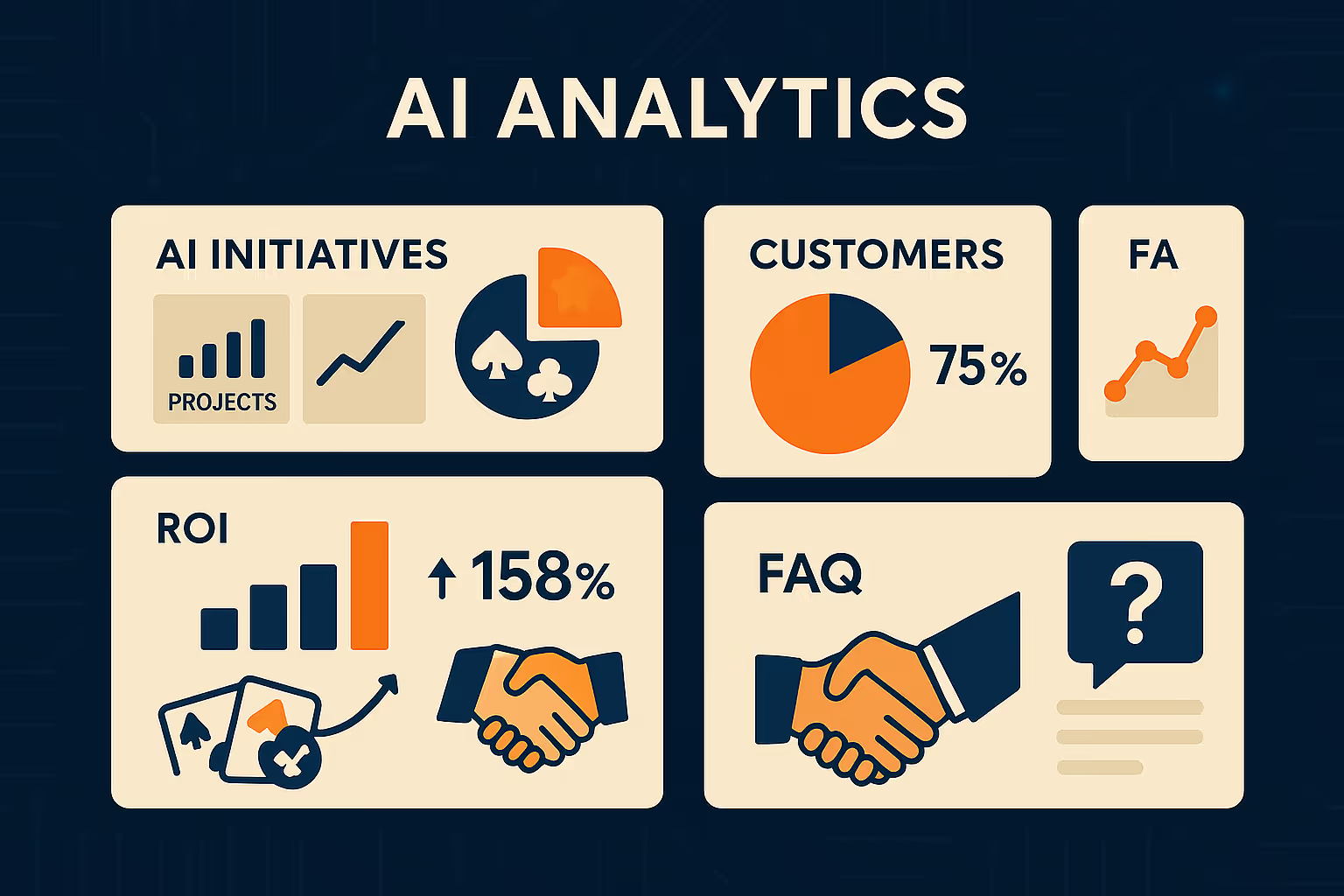
How long does it take to see ROI from AI customer engagement initiatives?
Most companies start seeing initial improvements within 3-6 months, with significant ROI typically emerging after 12-18 months. The timeline depends on implementation complexity, data quality, and organizational change management.
What's the biggest mistake companies make when measuring AI ROI?
Focusing exclusively on short-term metrics while ignoring the compound value that AI creates over time. AI systems learn and improve continuously, creating value that traditional measurement approaches often miss.
Can AI ROI be measured across different customer segments?
Absolutely. In fact, segment-specific measurement often reveals where AI provides the most value. Different customer types respond differently to AI-driven experiences, and understanding these differences is crucial for optimization.
How do you account for AI's impact on brand perception and customer loyalty?
Use leading indicators like Net Promoter Score, customer satisfaction surveys, and brand sentiment analysis. These metrics often improve before hard business metrics, providing early signals of AI success.
What role does data quality play in AI ROI measurement?
Data quality is fundamental. Poor data leads to inaccurate AI decisions, which skew ROI measurements. Investing in data governance and quality management is essential for reliable ROI measurement.
How often should AI ROI be reassessed?
Establish multiple measurement cadences: daily operational metrics, weekly performance reviews, monthly strategic analysis, and quarterly comprehensive ROI assessments.
The truth about measuring AI ROI in customer engagement is simple: it's not just about the tech, but also about understanding how that technology transforms every aspect of your customer relationships. Companies that master this measurement are the ones that turn AI from an expense into their most valuable competitive advantage.
Did you find this article helpful? If so, please consider sharing it with other industry professionals such as yourself.
Ready to use Smartico?
Join hundreds of businesses worldwide engaging players with Smartico.










